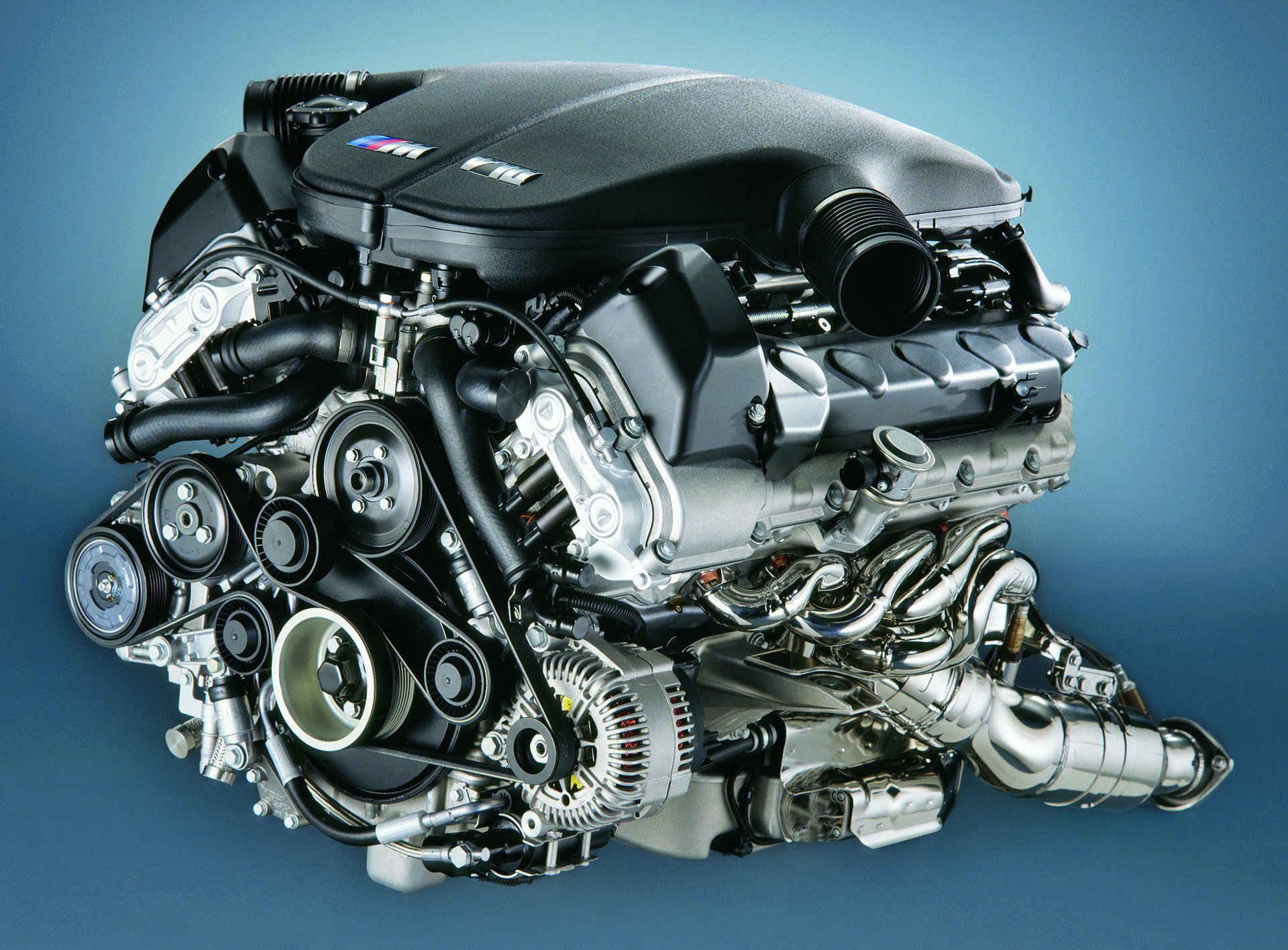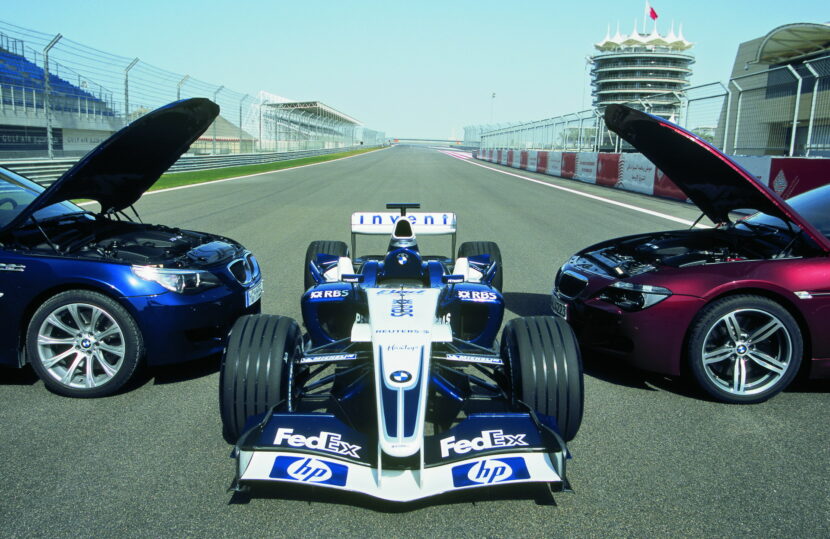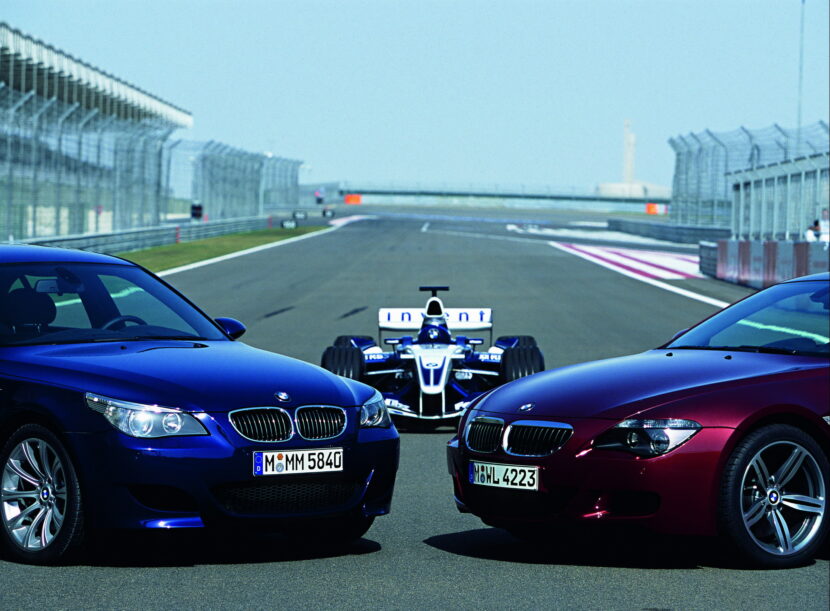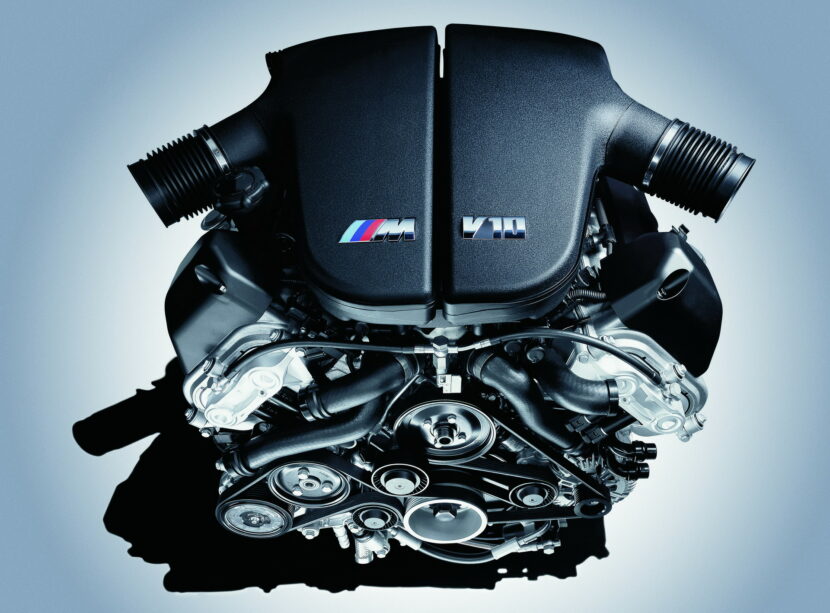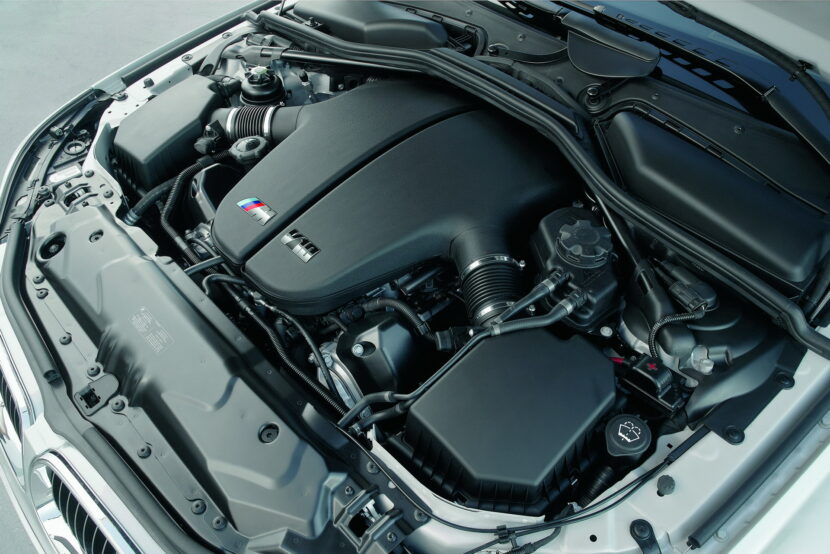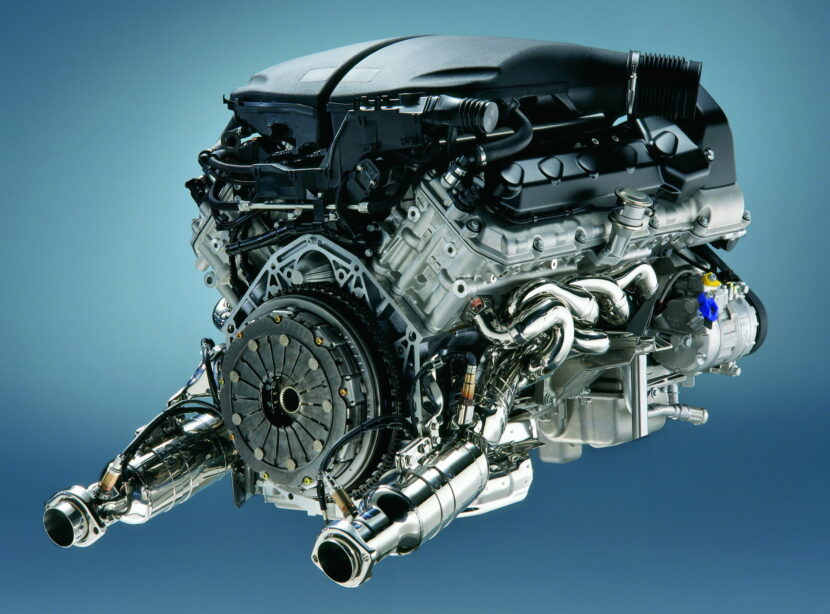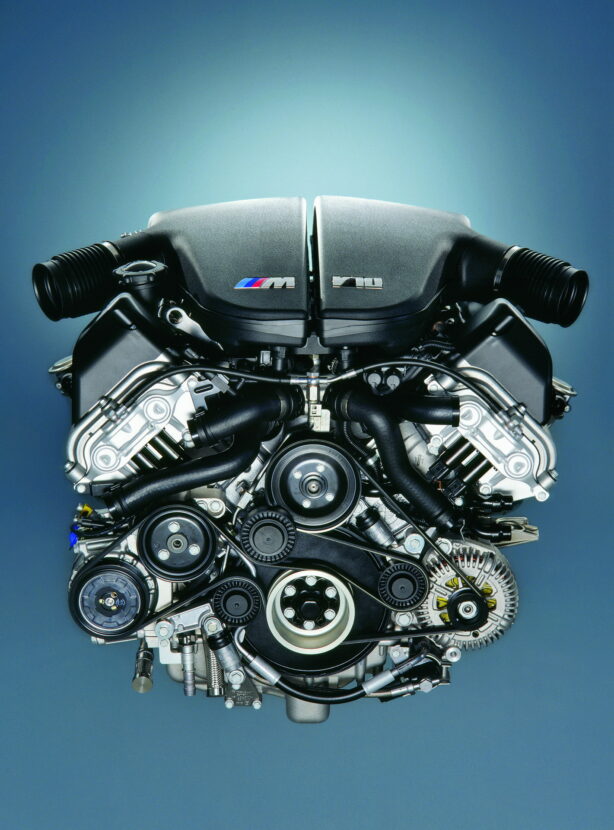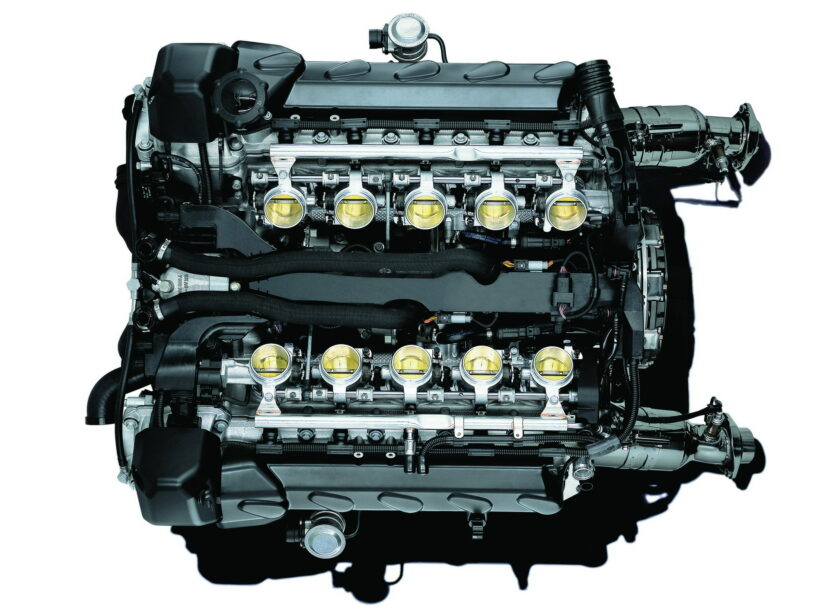In this article, we take a look at the BMW V10 engine and what models are powered by this one-of-a-kind BMW V10 engine. Built with proper F1 knowledge: the multi-awarded S85 engine is BMW’s sole 10-cylinder powerplant ever produced. From 2005 up to 2010, the fascinating V10 engine has equipped the high-end E60/E61 M5 and E63/E64 M6 model generations.
A one-off example of technological superiority
The BMW S85 powerplant is spectacular in all sheer technical and performance aspects and is rightfully considered a great engineering achievement. That’s especially true due to the substantial knowledge from Formula 1 that was put in the development process of this unique V10 engine.
As a matter of fact, the exclusivity of the BMW’s only 10-cylinder powerplant in history is also highlighted by the fact that it got its very own code. The S85 is not related and not derived from any other standard BMW powerplant, making it a standalone BMW M engine.
As the “S6x” particle is used for the BMW M V8 units and the “S7x” was used for the BMW M 12-cylinder powerplants, the F1-inspired V10 engine that was launched in production starting 2005 received the special S85 code (even though “S8x” would have signified more cylinders, given the naming scheme).
To this date, the BMW V10 engine remains the pioneer and single representative of the “S8x” engine family. As BMW sadly exited the F1 business after the 2009 season and given latest developments in the automotive industry, the S85 will likely and sadly remain the one-and-only V10 of the brand.
Dissecting the architecture of the 10-cylinder engine
As a standalone engine with a very unique character, the S85 unit was infused with F1 technology. The S85B50, as this was its complete, formal name, was derived 3.0-liter P84/5 Formula 1 engine that powered the BMW Williams FW27 F1 single-seater that competed during the 2005 season.
The FW27 was also unique in an aspect: it was the only Williams F1 car competing in the 2000s to feature a 6-speed transverse semi-automatic gearbox instead of the more conventional 7-speed transmission. The FW27 was also the last BMW-powered Williams single-seater before the Bavarians switched to the Sauber F1 Team starting with the 2006 season.
The V10 aggregate boasted a cylinder displacement of exactly 4,999 cc, which makes roughly 5.0 liters. Of course, like proper Formula 1 engine, the S85 also featured natural aspiration as means of supercharging.
The cylinder block was entirely cast out of aluminum (with a split at the crankshaft axis), that ensured a lower mass and better temperature and pressure resistance. The S85 was equipped with 4 hydraulically lifted valves per cylinder (40 in total) and a dual overhead camshaft (DOHC) valvetrain configuration.
Of course, like all new BMW engines, the S85 10-cylinder unit made use of the state-of-the-art Double VANOS variable valve timing system used on both the intake and exhaust camshafts (hence, the “Double” particle compared to the classic, single VANOS used solely on the intake camshaft).
The cylinder bank of the V10 was angled at precisely 90 degrees. The S85B50 was capable to achieve a peak compression ratio of no less than 12.0:1, which is common for a naturally aspirated engine with such a large displacement as this V10. The cylinder bore amounted to 92 mm, whereas the stroke reached 75.2 mm to ensure an efficient compression during the engine cycle.
The throttle of the air intake system consisted 10 individual and electronically controlled units – so, no VALVETRONIC variable valve lift system here. The valves were actuated by means of non-rotating inverted bucket cam followers. No liners were used for the cylinders and the MAHLE Motorsport pistons were manufactured from forged aluminum and used an oil cooling mechanism.
To withstand the immense mechanical forces developed by the S85 10-cylinder petrol burner, the crankshaft was integrally made of reinforced forged steel and featured specific counterweights. The share crankpins produced a variable firing interval at 90 degrees or at 54 degrees.
The engine control unit or ECU installed in the BMW S85 engine came courtesy of Siemens and it was entitled MS S65. To achieve a good balance, the cylinder firing order for the mighty V10 was 1-6-5-10-2-7-3-8-4-9.
To detect and simultaneously measure possible engine misfires and the engine knock, the BMW S85 engine employed a technical solution called ionic current measuring system instead of the traditional knock sensors. This allowed for the precise measurement of the low voltage current passing through the spark plugs immediately after the ignition spark.
As means of engine oiling, the S85 used a quasi-dry sump lubrication system with 2 oil sumps (one bigger and one smaller with a combined capacity of 9.3 liters). The oil is fed from the small sump to the main, larger one using electronic scavenge pumps. The estimate oil consumption is about 1.0 liters / 1000 kilometers.
Sending the engine output towards the rear-axle wheels was the duty of the last generation of sequential manual gearboxes ever to be produced by BMW: the 7-speed SMG III.
Compared to the previous SMG II used on the E46 M3, the new transmission was equipped with Drive Logic and was capable of achieving 20% faster shifting times. In its most aggressive mode, the SMG III achieved a shifting time of just 65 milliseconds.
Impressive performance figures and multiple accolades for the BMW S85 engine
The F1-inspired S85 unit developed a peak output of 373 kW / 507 PS (500 hp), achieved as high as 7,750 rpm given the naturally-aspirated supercharging. The red line of the high-revving V10 begins at a whooping 8,250 rpm.
Compared to the preceding S62 engine powering the E39 M5, the S85 was superior in every aspect. The old 8-cylinder unit came with a displacement of 4.9 liters, whereas the 10-cylinder boasts 5.0 liters. There was also a substantial increase in output of more than 100 hp in the new S85 compared to the S62 (400 PS / 394 hp).
At 240 kilos, the new V10 powerplant was also heavier than the S62 at 158 kilograms. The latter achieved a specific power of 81 hp/liter, whereas the S85 boasted no less than 101.4 hp/liter.
In terms of maximum torque, the S85 achieved a staggering 520 Nm (384 lb-ft) at 6,600 rpm, although a minor increase over the outgoing S62, which was good for 500 Nm (369 lb-ft) /3800 rpm.
As it weighed extra and was more powerful than its predecessor, the S85 was also more thirsty drinking no less than 22.7 l/100 km in the city, as measured by BMW in the E60 M5. On the highway, the fuel consumption dropped to 10.2 l/100 km, while the combined figure amounted to 14.8 l/100 km.
During its lifespan, the prodigious BMW S85 engine received numerous awards and benefitted from the worldwide recognition from experts and the fan base. From 2005 to 2010, the Bavarian V10 got no less than 10 accolades.
In 2005, the S85 won 4 different International Engine of the Year awards in multiple categories as follows:
- International Engine of the Year, BMW 5.0 Liter V10 (M5, M6)
- Best Performance Engine
- Best New Engine
- Best Above 4.0 Liter
The performance was repeated in 2006, when the S85 also took the big prize in 3 categories:
- International Engine of the Year, BMW 5.0 Liter V10 (M5, M6)
- Best Performance Engine
- Best Above 4.0 Liter
In 2007 and 2008, the BMW S85 continued to impress the automotive experts and managed to grab the “Best Performance Engine” accolade 1 time and “Best Above 4.0 Liter” award 2 times.
Interesting facts
Due to its specific development process, the S85 remains a pioneer for BMW, having no predecessor and successor. The knowledge and some of technical solutions used for the V10 powerplants were later transferred onto the new BMW 8-cylinder engine that was to power the E90/E92/E93 M3 model family.
To cleverly signal the S85 roots, the new V8 was codenamed S65 (2 cylinders less and part of the standard 8-cylinder unit family). The full designation of the new NA powerplant was S65B40, also highlighting the 4.0-liter displacement.
In general, the S85 is an overall reliable engine if used wisely and regularly serviced as indicated by the manufacturer. Some frequent problems with the VANOS were signaled by clients. The connecting rod bearings are subject to premature wear-out and need replacement every 80,000 kilometers on average.
The maximum output of 507 PS is more than enough even today, but the S85 still has some extra resources when its comes to engine tuning. You can opt for specifically designed cam and stroker kits, which, on a combined basis, will increase the peak output to no less than 620 – 630 PS.
The easiest alternative is to purchase the E60 M5 Supercharger kit, such as the ESS VT2 based on Vortech V3Si supercharger. With a maximum boost of 7 psi, the chip-tuned S85 will, in this case, be capable of developing an outrageous 650 PS.
To conclude, the BMW S85 is the epitome of technical engineering, a pioneering symbol of BMW’s previous involvement in Formula 1 and a proud flagship of a bygone era. It will forever demonstrate the immense potential of Formula 1 as the top motorsport competition and the supremacy of BMW in the field of powertrain development.


